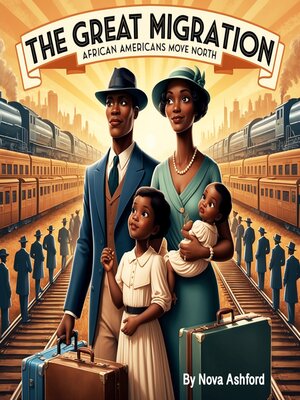
Sign up to save your library
With an OverDrive account, you can save your favorite libraries for at-a-glance information about availability. Find out more about OverDrive accounts.
Find this title in Libby, the library reading app by OverDrive.



Search for a digital library with this title
Title found at these libraries:
| Library Name | Distance |
|---|---|
| Loading... |
The Great Migration was one of the most significant demographic shifts in American history. Between 1916 and 1970, more than six million African Americans left the rural South and moved to urban areas in the North, Midwest, and West. This movement not only changed the lives of the people who migrated but also reshaped the cultural, political, and economic fabric of the United States.
For many African Americans, life in the South was marked by racial discrimination, economic hardship, and constant threats of violence. Jim Crow laws enforced segregation in every aspect of public life, from schools and transportation to housing and employment. Black families lived under the constant fear of lynching and racial terror. Economically, most African Americans were trapped in sharecropping or low-wage labor, with little opportunity for advancement.
At the same time, the North offered a vision of hope. Industrial cities like Chicago, Detroit, Cleveland, and New York had booming economies, especially during World War I and World War II, when labor shortages opened up jobs in steel mills, factories, and railroads. Though racism still existed in the North, it was often less openly violent, and African Americans had more chances to organize, vote, and build communities. This combination of "push" and "pull" factors drove millions to pack up and seek a better future.







